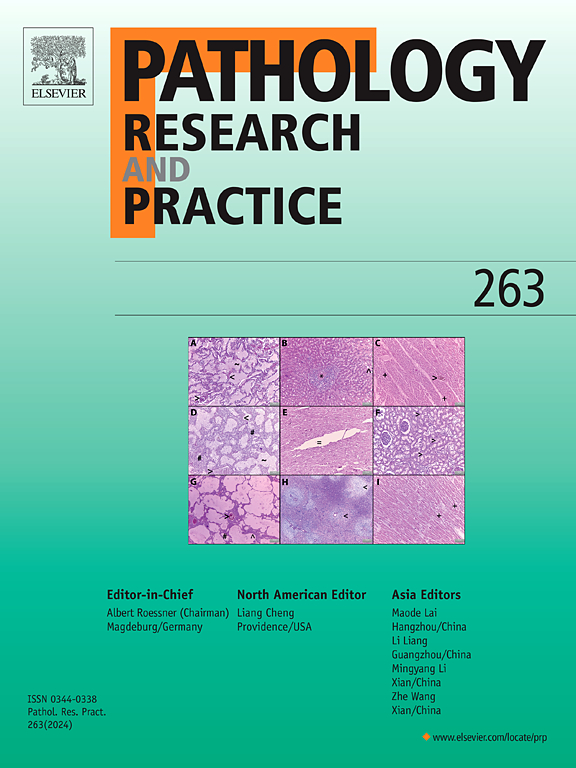Incidental early mixed epithelial and stromal tumor of the efferent testicular-ductular system of the genitourinary tract: A small case series with literature review
IF 2.9
4区 医学
Q2 PATHOLOGY
引用次数: 0
Abstract
Mixed epithelial and stromal tumors (MEST) are rare, hormone-driven tumors of the genitourinary tract composed of stromal and epithelial components. They are rarely encountered in men, and it is exceedingly rare to find MESTs in efferent testicular-ductular structures. The current literature focuses on symptomatic men with macroscopically evident tumors. However, MESTs may present as incidental microscopic lesions and can easily be missed by the interpreting pathologist. Here, we discuss four cases of incidental low-grade MESTs of the seminal vesicle, ejaculatory duct, and epididymis. The patients were men ranged in age from 52 to 69 years old. Three were asymptomatic with elevated prostate specific antigen who were diagnosed with prostatic adenocarcinoma on core biopsies. Subsequent prostatectomies revealed MESTs with two cases involving the seminal vesicles and one involving the ejaculatory duct. The fourth patient presented with a testicular mass and was found to have vasitis nodosa, sperm granulomas, and a MEST of the epididymis. All four tumors demonstrated nodules composed of a bland spindled stroma and variable amounts of dilated glands lined by bland cuboidal epithelium. Immunohistochemistry showed stromal positivity for ER, PR, AR (patchy), and WT1 while the epithelial component expressed pancytokeratin, CK7, GATA3, AR, and PAX8 (weak), consistent with MEST. Low-grade incidental MESTs are usually benign with excellent long-term outcomes, although they can recur if incompletely excised or undergo malignant transformation. While these lesions are rarely reported, it is important to recognize the characteristic morphology and immunoprofile of MESTs to avoid misidentification and mismanagement of these tumors.
求助全文
约1分钟内获得全文
求助全文
来源期刊
CiteScore
5.00
自引率
3.60%
发文量
405
审稿时长
24 days
期刊介绍:
Pathology, Research and Practice provides accessible coverage of the most recent developments across the entire field of pathology: Reviews focus on recent progress in pathology, while Comments look at interesting current problems and at hypotheses for future developments in pathology. Original Papers present novel findings on all aspects of general, anatomic and molecular pathology. Rapid Communications inform readers on preliminary findings that may be relevant for further studies and need to be communicated quickly. Teaching Cases look at new aspects or special diagnostic problems of diseases and at case reports relevant for the pathologist''s practice.

 求助内容:
求助内容: 应助结果提醒方式:
应助结果提醒方式:


